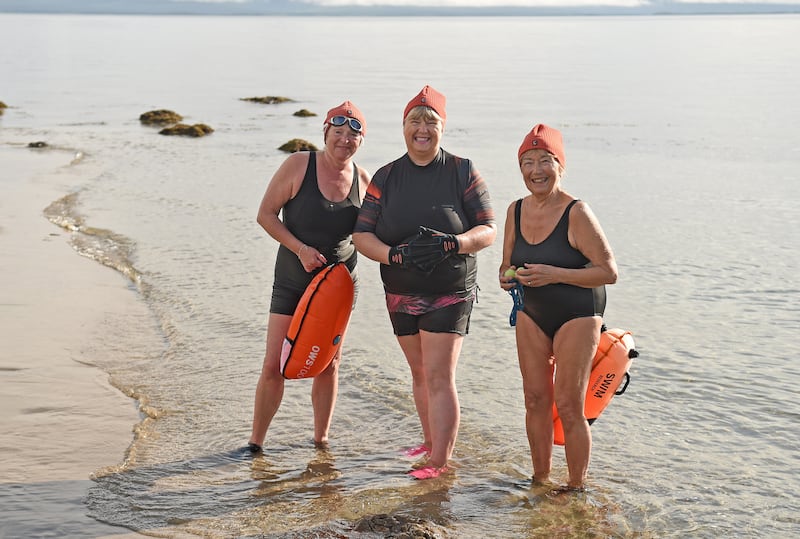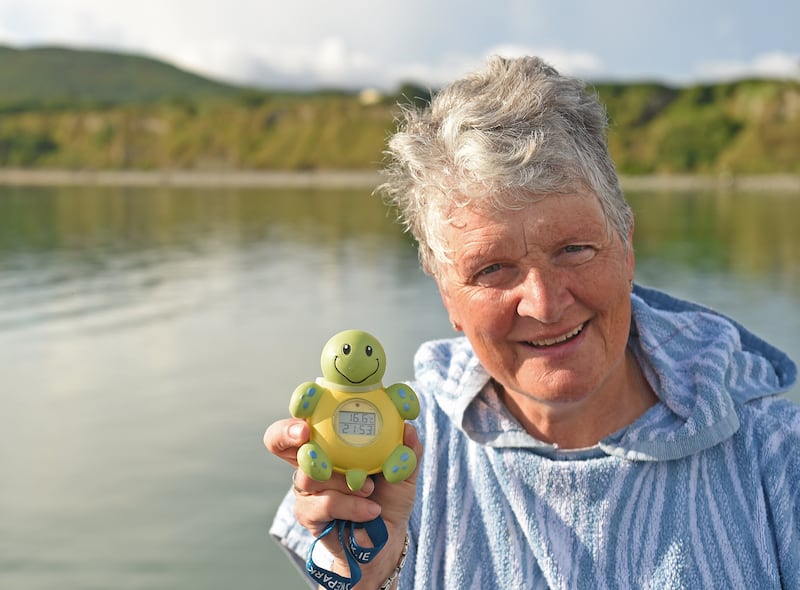Rising temperatures in the North Atlantic over the past few weeks have made for pleasant swimming conditions but the women of Mná Na Mara fear the long-term effects.
The swimming group, more than 14-strong, gambolled in the water at Old Head, Louisburgh, Co Mayo, on Tuesday morning as they have done every morning, winter and summer, for years.
“If this is what El Nino means then bring it on,” one said, laughing as she splashed about in the mirror-like water, with Croagh Patrick looming in the background.
Orange swim buoys trailing, the swimmers, led by retired teacher Mairead Staunton, skipped into the water from the sandy stretch of beach.
READ MORE
Elfie Watson, an 83 year old who is originally from Germany, said she had noticed the waters of the Blue Flag beach were warmer than ever for the time of year, temperatures she would not normally expect until August or September.
“It’s just heavenly,” she said.
One Met Éireann climatologist this week described the sea temperatures as “exceptional” for this time of year, noting that they were driving the warmer-than-normal temperatures and recent thunderstorms.
The US National Oceanic and Atmospheric Administration (NOAA) declared a Category 4 extreme event for seas around Ireland and Great Britain with temperatures between 4 and 5 degrees above normal in places.
Members of the Co Mayo swimming group were happy to discuss the possible long-term impact of rising sea temperatures, as highlighted by the news this week that water temperatures in the North Atlantic are unusually high for the time of year.
“Yes, I am worried about the long-term effects of a rise in sea temperatures,” said Elfie. “One has to be concerned about the potential damage to ocean life if water temperatures continue to increase.”
Maria Daly likes the balmier waters so much that sometimes she swims twice a day at the popular amenity.
Another swimmer, Maria O’Grady, was sanguine about the long-term effects of global warming.
“I don’t subscribe to this Armageddon scenario that is being constantly mooted. I think we can probably manage the effects of global warming. Since time began we have been managing and providing solutions. That’s what humans do, isn’t it?” she said.

Merci Kilcoyne struck a less positive note. She confessed to being very concerned about global warming.
“You can see the effects right here on our doorstep. Traditionally, the highest sea temperature here are recorded in the months of August, September and October. The water this last month or so has been exceptionally warm,” she said.
[ Pace of rise in global sea level has doubled - UN climate reportOpens in new window ]
Mairead, acknowledged by her fellow swimmers as “the boss woman” of Mná na Mara, brought along a thermometer this morning, to test the water temperature.
Shortly after 8am, the device recorded a temperature of 16.2 degrees Celsius.
“That’s high for the time of year,” she noted. “The normal June reading is around 14 degrees Celsius.”

With her two border collie dogs, Holly and Jan, by her side,Mairead sounded an ominous note: “The long-term danger, of course, is that the oceans won’t make all the oxygen they normally make and that all sea life will die.”
With that, Mairead and her fellow Mná na Mara warriors were off to change and collect beach litter, part of their normal routine after the early-morning dip is over.
















